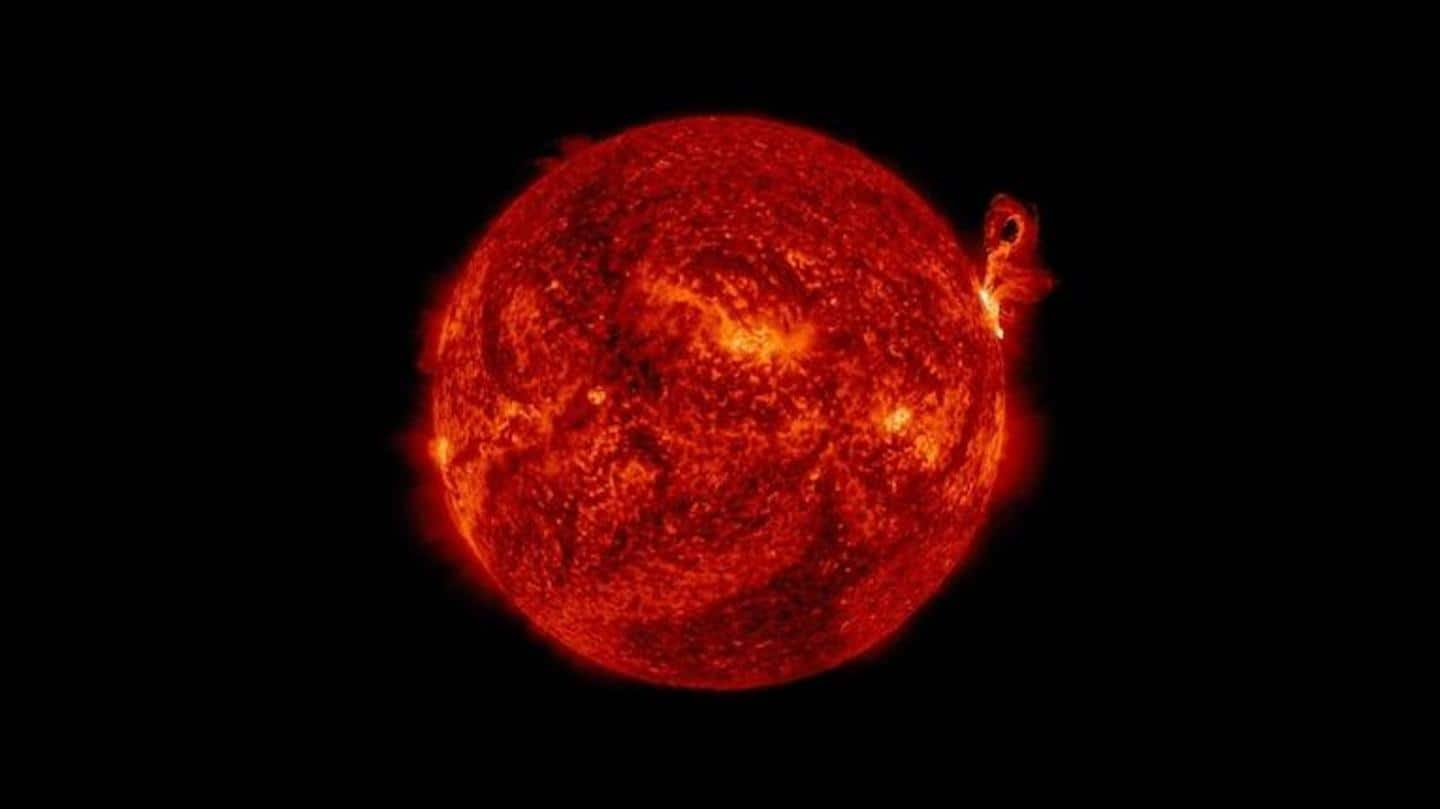
Beware! Multiple solar storms to strike Earth this weekend
What's the story
The Sun has Earth on its toes as multiple solar storms are expected to enter our planet's atmosphere on Saturday and Sunday.
A full halo coronal mass ejection (CME) and a slow-moving one are headed our way. They might affect Earth's magnetism and cause satellite disruptions.
Solar storms and flares have become common as the Sun is nearing the peak of its activity cycle.
Context
Why does this story matter?
Last month, when we saw a three-hour-long solar flare, we thought it was the Sun flexing its magnetic muscles.
If that's the case, what do we call two back-to-back coronal ejections that are expected to strike our planet?
Whatever it is, it is that time of the Sun's activity cycle when it shows everyone who's the real boss in our little solar system.
Possibility
The full halo CME could cause severe solar storm
Multiple CMEs are headed Earth's way, according to various reports. While one is a full halo CME, the other is a slow-moving one.
The former is expected to cause G1- (minor) and G2- (moderate) class solar storms, but the small possibility of a G3-class storm is not also disregarded.
The latter, on the other hand, has a high-speed solar wind closely following it.
Information
Eruption at sunspot caused one of CMEs
Out of the two CMEs predicted to hit Earth on Saturday, the full halo CME, was caused as the result of an explosion in the sunspot AR3060. The other one was thrown into space by an eruption on July 15.
Definition
What are coronal mass ejections?
Coronal mass ejections or CMEs happen when the Sun spits out superheated plasma and accompanying magnetic field from the outermost layer of its atmosphere or corona.
When they interact with Earth's magnetic field, they can lead to several phenomena.
On one hand, they create breathtaking auroras, while on the other, they can potentially wreak minor havoc on our planet.
Timeline
Densest portion of CME to arrive at 9:30 pm
The full halo CME got its name because it appears to flare out around the Sun like a halo. It was spotted on Thursday (July 21).
Images from the National Ocean and Atmospheric Administration's (NOAA) GOES-16 satellite showed a flare emanating from just above the Sun's equator.
The CME's densest portion may arrive on Earth at 9:30 pm IST on Saturday (July 23).
Effects
Should we be worried?
The full halo CME is expected to cause auroras at Earth's poles—though farther from the poles than usual. It is also likely to affect radio propagation in high latitude areas such as the US and the UK.
Migratory animals may face some difficulty as they use Earth's magnetic field for navigation.
A G3-class storm can also cause power grid fluctuations and interrupt satellite operations.
Problem
There is possibility of both CMEs combining
The slow-moving CME is closely followed by a high-speed stream of solar wind. It has the potential to amplify any storm the CME creates, and this could lead to continuous unrest throughout the day.
Scientists have also not disregarded the possibility of the two combining to form a strong solar storm. However, such a phenomenon will depend on the time they strike.